Up Next

Seven of the 10 Formula 1 teams have brought upgrades to the third round of the 2023 Formula 1 season at the Australian Grand Prix.
Mark Hughes runs through the changes listed by the teams in the Friday ‘show and tell’ at Albert Park.
Red Bull

A new front wing, with a different combination of chord lengths and cambers has also necessitated a new endplate because of the regulation concerning continuous surfaces.
The wing enables a wider range of balancing options and is better suited to this and upcoming circuits requiring more front end than either Bahrain or Jeddah. There’s also a bodywork modification ahead of the rear tyre, tailored to complement the chosen brake duct size for this track.
Gary Anderson’s view: Red Bull has a small modification to the trailing edge of the rear-most front wing element (green highlight). I wouldn’t really call it a car development, it’s probably just to be able to get more front end on the car as an Albert Park balance requirement.
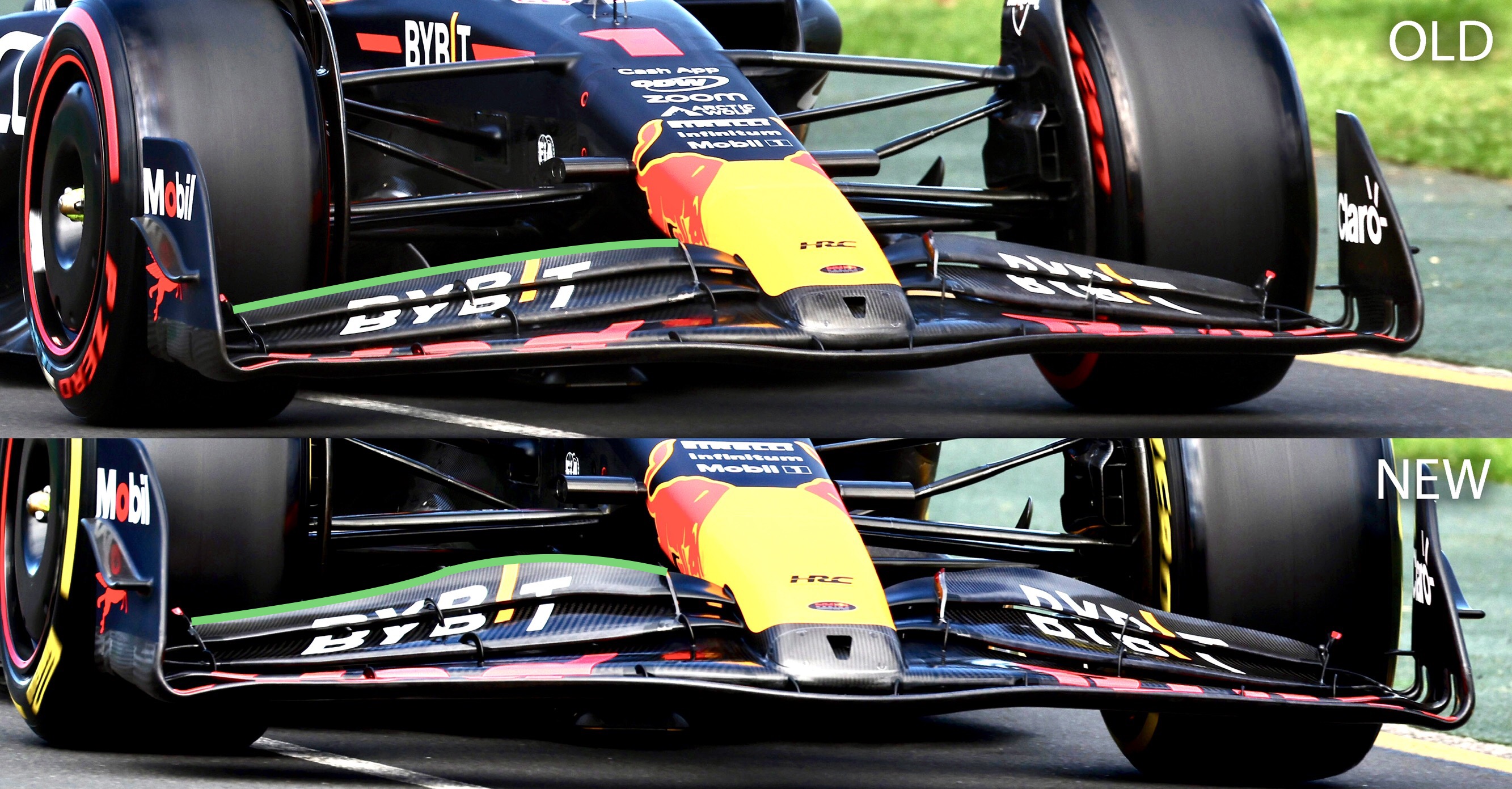
The one thing Max Verstappen likes is a very reactive front end. Sometimes Sergio Perez struggles with this, but as we have seen in the last couple of races he seems to have come to terms with that. If you can cope with it, it is the fastest way.
Mercedes
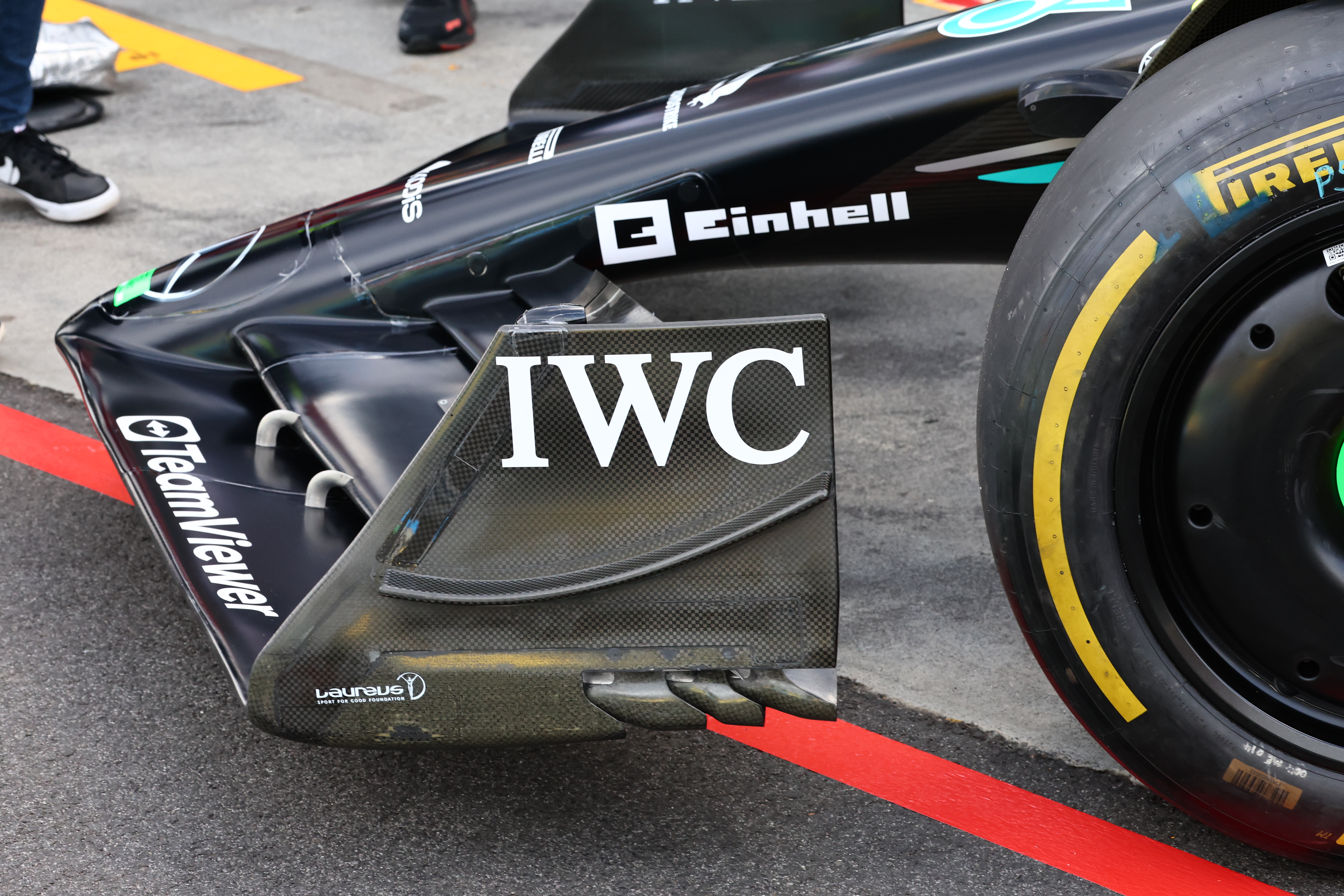
The floor edge wing has additional vanes on its underside with the aim of enhancing flow over the diffuser to improve its efficiency.
Alpine
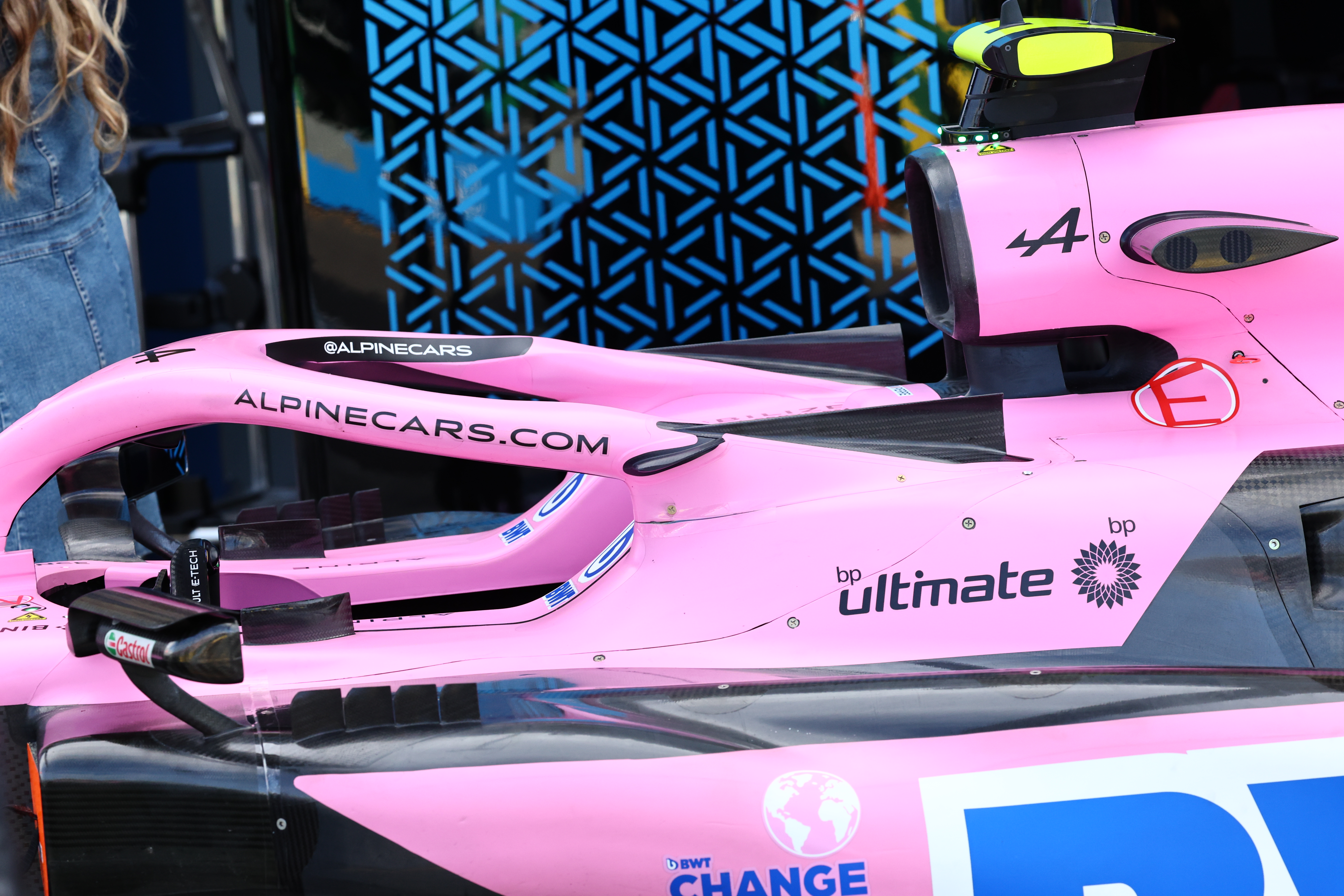
Modified fairing around the halo mounting to improve airflow to the rear wing.
McLaren

A smaller engine cover, taking advantage of the lower cooling demands of this track compared to the opening two. The tunnel entry vanes have been realigned, giving a different prioritisation between through-tunnel flow and that around the lower outer bodywork.
Alfa Romeo
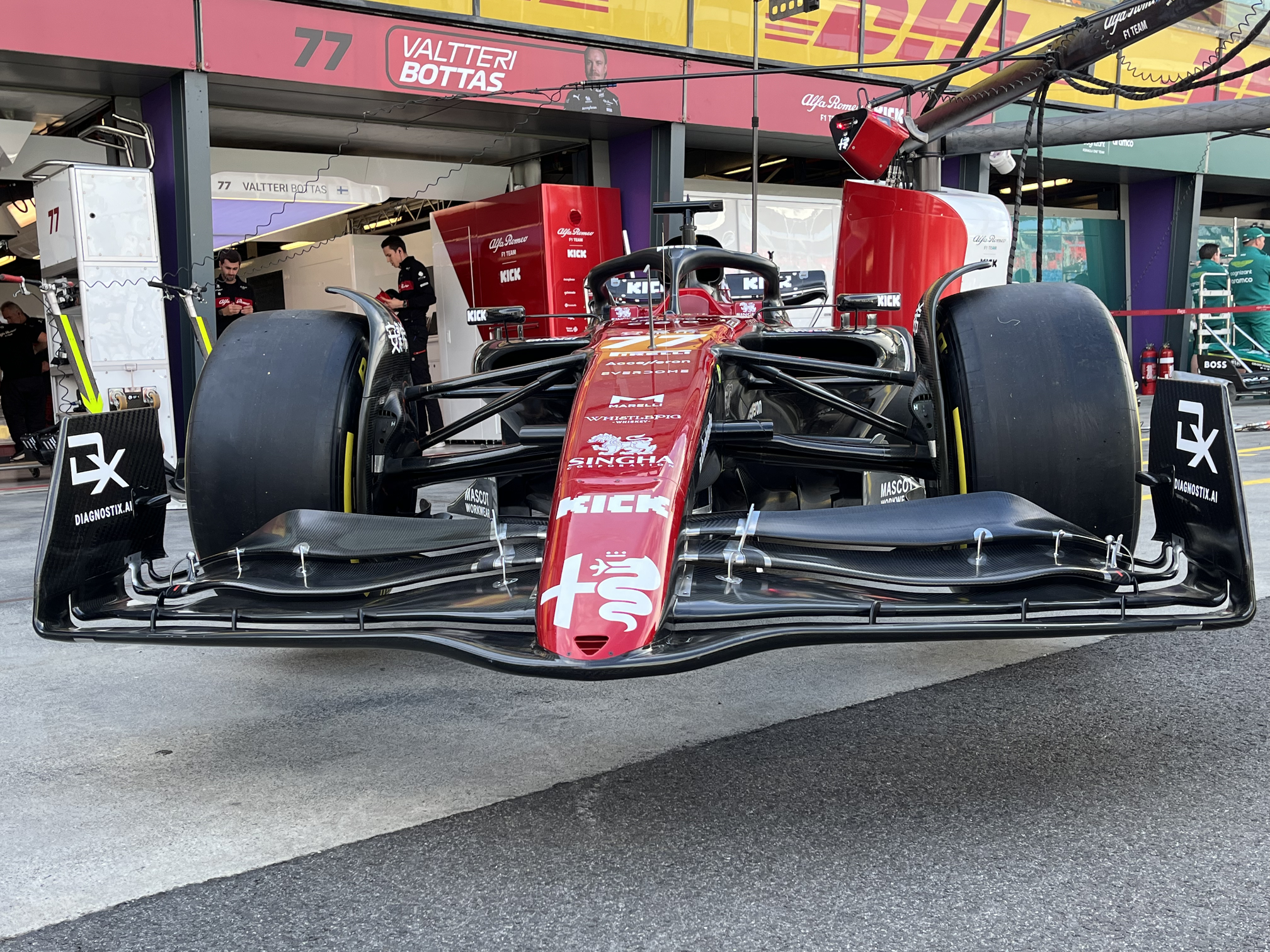
A new nose and front wing, with the nose now ending on the first element rather than the second.
As with Red Bull, the new arrangement is to give a wider range of balancing options in the car’s set-up. New shorter chord mirror attachments are designed to improve the airflow around the cockpit.
AlphaTauri
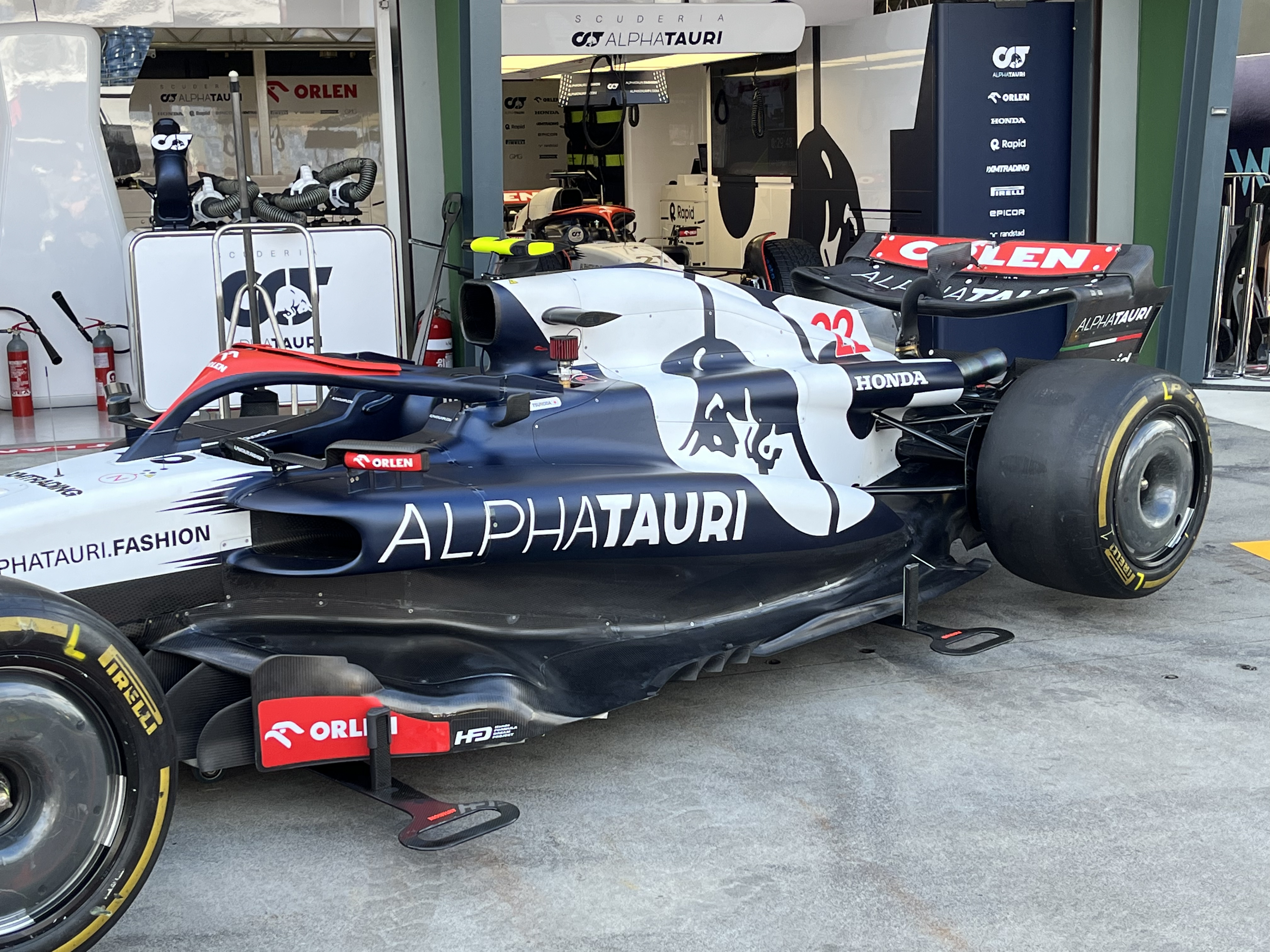
A big sweep of upgrades for this race, beginning with an all-new floor. This has been re-profiled behind the inlet fences and the flat section between the tunnels has been widened (effectively narrowing the tunnels at that point) to increase the power of the vortices created by the inlet fences.
There’s a smoother transition between the rear of the floor and the rear crash structure, to give a smoother expansion for the airflow. The team says this will be “particularly beneficial in improving rear floor performance at very low rear ride heights typically seen in early braking.”
The tunnel fences have been reprofiled, as has the transition between the fences and the tunnel, the aim being to increase the vorticity, thus speeding up the flow. The floor edge behind the small winglet and been reprofiled. The diffuser has more curvature in plain view – to increase its expansion rate to the side.
Williams

An intermediate level of front wing downforce is available to give a more precise match with the balancing requirements. The rear wing endplate has a fence designed to make a more efficient flow around the rear tyre.
Gary Anderson’s view:
Williams has added what can best be described as a ‘growth’ to the outer surface of the rear wing endplate (yellow ellipse).
It doesn’t appear to affect the inner surface (yellow arrow), so it is there to modify the airflow on that area of the endplate.
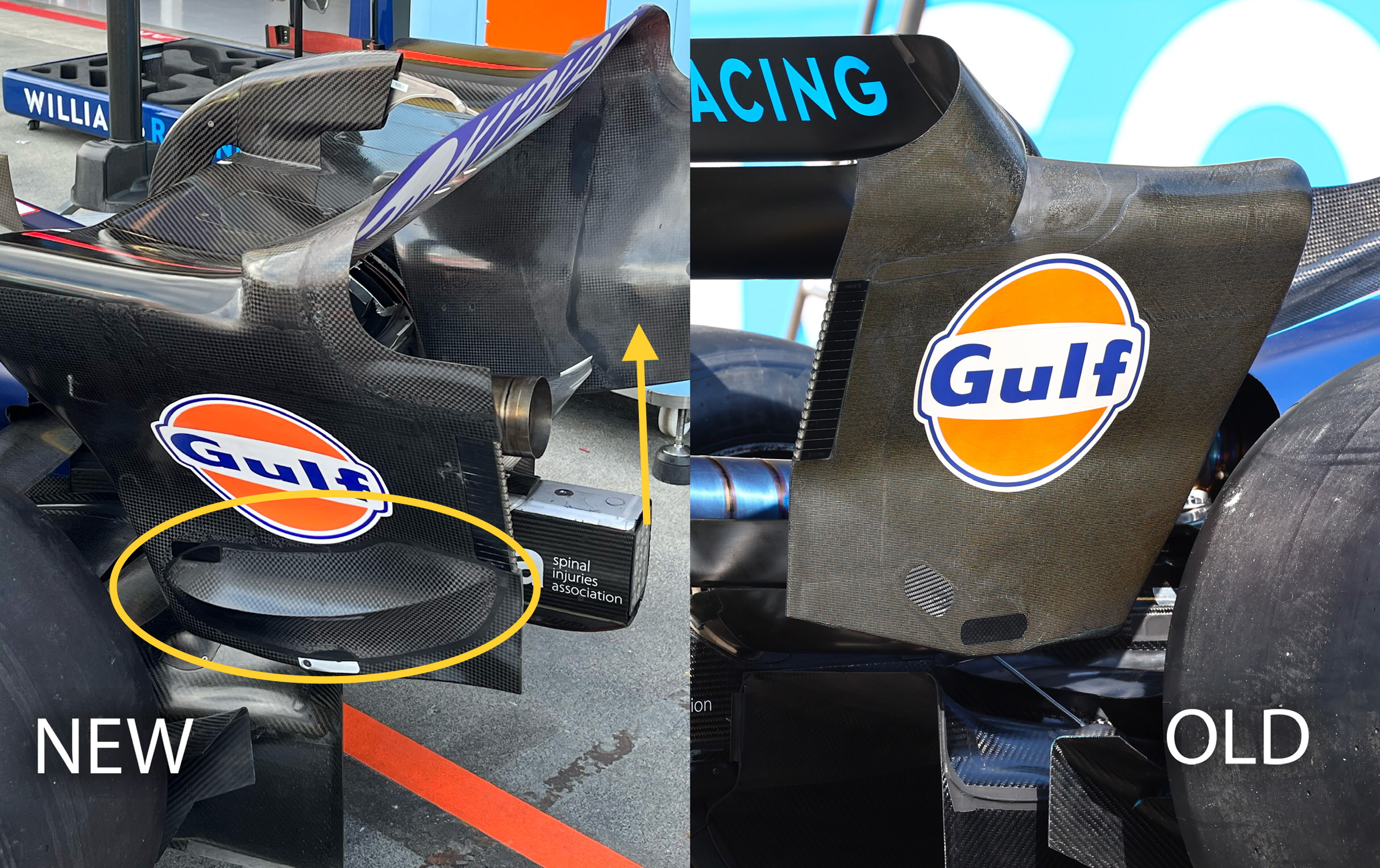
On the inside surface of the rear brake ducts, there are some very highly-cambered turning vanes. These turn the airflow upwards, reducing the amount of airflow that without them would normally be pulled under the vertical sidewall of the diffuser, reducing the diffuser’s performance.
These growths should increase the efficiency of those turning vanes by better management of the airflow around the inside of the rear tyre, which in turn will improve the performance of the diffuser.
Ferrari, Aston Martin and Haas: No reported changes.




